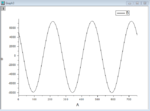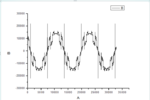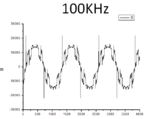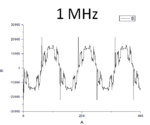syedshan
Advanced Member level 1
- Joined
- Feb 27, 2012
- Messages
- 463
- Helped
- 27
- Reputation
- 54
- Reaction score
- 26
- Trophy points
- 1,308
- Location
- Jeonju, South Korea
- Activity points
- 5,134
Dear all,
I am having problem with getting data from my ADC... please see the following
I am giving 125Mhz Sampling clock to1 Mhz Sine wave signal. The image attached is the response that I am getting.
What are these Sudden Jerks or Instant rise or Falls... Is it because of sampling frequency bei
In actual I have to give different signal, but I am having this same Jerks problem with that as well, so I tried it with simple sine wave.
Also When my sampling frequency is 250 Mhz the things are fine...
Please eagerly waiting for response
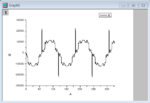
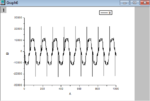
I am having problem with getting data from my ADC... please see the following
I am giving 125Mhz Sampling clock to1 Mhz Sine wave signal. The image attached is the response that I am getting.
What are these Sudden Jerks or Instant rise or Falls... Is it because of sampling frequency bei
In actual I have to give different signal, but I am having this same Jerks problem with that as well, so I tried it with simple sine wave.
Also When my sampling frequency is 250 Mhz the things are fine...
Please eagerly waiting for response


